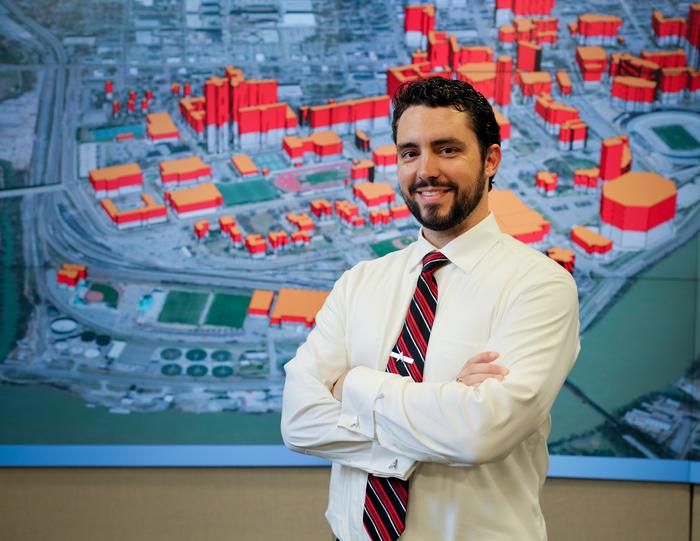ORNL’s Joshua New was celebrating his birthday and preparing to ice climb Alaska’s Godwin Glacier when he received his highest career honor to date.

Credit: Jason Richards/ORNL, U.S. Dept. of Energy
ORNL’s Joshua New was celebrating his birthday and preparing to ice climb Alaska’s Godwin Glacier when he received his highest career honor to date.
The computer scientist and distinguished R&D staff member at the Department of Energy’s Oak Ridge National Laboratory was named the 2024 Researcher of the Year by R&D World magazine as part of its R&D 100 Professional Award winners. This is the second time New was included as part of R&D World’s annual awards, with his first recognition earned in 2016.
“There were a lot of things that converged in an unexpected way,” New said. “It made it all the brighter for having some personal time where I’m doing something of interest and then also be notified of a professional award.”
Since joining ORNL in 2009, New has become an established leader in building science, energy efficiency and climate change research, averaging more than 12 publications a year. His latest work created ‘digital twin’ simulations of more than 141 million buildings in the United States and Puerto Rico to better understand how building updates can improve their environmental impact and energy efficiency.
“We mine satellite, aerial, street view, Lidar — light detection and ranging — and real estate databases to get the unique geometry and properties of a home or office and simulate that with current weather,” New said. “We then simulate it with different technologies like solar panels on the roof, upgraded insulation or adding an electric vehicle charger.”
New and his team at ORNL recently made data from 125.7 million buildings publicly available to help encourage more sustainable construction and retrofits of existing buildings.
“We want people to save money and enable a more sustainable environment to live in now and in the future,” he said. “We’ve made the U.S. building data and models available for any simulation-informed use case.”
This breakthrough is the latest step in New’s work to make buildings more in line with the environmental needs of specific areas. Starting in 2015, he and his team began creating simulations for individual buildings using ORNL supercomputers to identify precise ways to make buildings more energy efficient and develop artificial intelligence to match utility data.
“We were doing lots of simulations on supercomputers for different versions of a single building, and we realized the only thing that’s stopping us from creating digital twins of all buildings is just data about individual buildings,” New said.
The team began gathering data, first for EPB in Chattanooga as part of a three-year project where they created models based on 187,000 buildings.
“We were able to try different data sets and algorithms and evolve our technology to match reality…15-minute energy use of each building,” he said. “That’s what gave it the power.”
This accomplishment would then progress into a nationwide database of simulated buildings covering the entire country. After five years, this effort resulted in strong interest from the public and private sectors involving projects and dozens of non-disclosure agreements with small companies all the way up to industry leaders such as Microsoft and Google.
New said that applying his expertise to projects that make such an impact is the most rewarding part of his work at ORNL.
“Two mottos I try to live by is to never pick up something without thinking deeply about how to make it better, and to leave the world in a state that’s better than you found it,” New added.
New was also quick to credit his team at ORNL for helping to bring his research initiatives to life.
“I shared the news of the award immediately with my team,” he said. “No researcher stands alone, and I stand on the shoulders of giants. I hold hands with amazing intellects, and I have access to the world’s fastest supercomputers. What we did would not have been possible without all of those.”
R&D World magazine announced its winners from a selection of 141 finalists across 16 countries, with ORNL receiving 14 R&D 100 awards.
UT-Battelle manages ORNL for DOE’s Office of Science, the single largest supporter of basic research in the physical sciences in the United States. The Office of Science is working to address some of the most pressing challenges of our time. For more information, please visit energy.gov/science. – Mark Alewine



